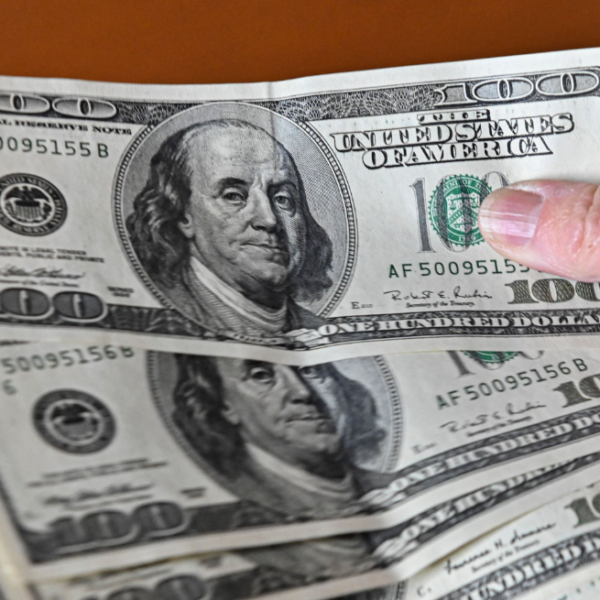The United States Dollar (USD) is back in the red after a temporary rebound on Tuesday. An improving market mood appears to weigh the US Dollar’s safe-haven appeal. The US S&P 500 futures are up 0.50%, cheering better-than-expected earnings from Microsoft and Alphabet after markets closed in New York. Meanwhile, the US Treasury bond yields have paused their sell-off amid reduced demand for the US government bonds.
However, concerns over the US debt ceiling continue to linger alongside the banking sector fears as investors gear up for the release of the top-tier United States Consumer Durable Goods Orders data. Earnings from the US tech giant, Meta, will also garner attention later in the American session.
On the macroeconomic front, the first quarter Gross Domestic Product (GDP) and April Personal Consumption Expenditures (PCE) Price Index will be closely scrutinized in the second half of this week.
The US Dollar Index, which tracks the USD performance against a basket of six major currencies, drops below 101.50 on Wednesday. The index gained 0.56% on Tuesday.
Daily Digest Market Movers: US Dollar Fails To Build On Tuesday’s Recovery
- On Tuesday, the European Central Bank (ECB), the Bank of Japan (BoJ), the Bank of England (BoE), and the Swiss National Bank (SNB) announced in a joint statement that they would reduce the frequency of their dollar operations with the Fed from May 1 as the volatility in financial markets has receded.
- US consumer sentiment weakened modestly in April, with the Conference Board’s Consumer Confidence Index edging lower to 101.3 from 104.0 in March (revised from 104.2).
- Wall Street’s leading indices tumbled on resurfacing US banking jitters after the troubled US bank, First Republic Bank and shares slumped 50%. The bank said it lost customer deposits of $102 billion in the first quarter.
- Concerns grew over the approaching US debt ceiling deadline after the House Rules Committee unexpectedly went into recess, delaying a Republican bill authorizing a $1.5 trillion increase to the US debt ceiling. The panel will return early Wednesday.
- 10-year US Treasury bond yields attempts a minor recovery after shedding nine basis points (bps) on Tuesday.
- Daily digest market movers: US Dollar fails to build on Tuesday’s recovery
- On Tuesday, the European Central Bank (ECB), the Bank of Japan (BoJ), the Bank of England (BoE), and the Swiss National Bank (SNB) announced in a joint statement that they would reduce the frequency of their dollar operations with the Fed from May 1 as the volatility in financial markets has receded.
- US consumer sentiment weakened modestly in April, with the Conference Board’s Consumer Confidence Index edging lower to 101.3 from 104.0 in March (revised from 104.2).
- Wall Street’s leading indices tumbled on resurfacing US banking jitters after the troubled US bank, First Republic Bank and shares slumped 50%. The bank said it lost customer deposits of $102 billion in the first quarter.
- Concerns grew over the approaching US debt ceiling deadline after the House Rules Committee unexpectedly went into recess, delaying a Republican bill authorizing a $1.5 trillion increase to the US debt ceiling. The panel will return early Wednesday.
- 10-year US Treasury bond yields attempts a minor recovery after shedding nine basis points (bps) on Tuesday.
Technical Analysis: US Dollar Index Remains Technically Bearish
The US Dollar Index (DXY) is turning south after failing to clear the 102.00 critical level. Tuesday’s rebound from the weekly trough is fading as sellers are fighting back control.
The bearish 21-Day Moving Average (DMA), now at 101.89, continued to limit bullish attempts. It is worth noting that the index has failed to settle above the 21 DMA since March 15 on a daily candlestick closing basis.
The 14-day Relative Strength Index (RSI) points south below the midline, justifying the ‘sell on rise’ trades in the US Dollar Index. Immediate support is seen at the previous day’s low of 101.19, below which the 101.00 round number will test the bullish commitments. Deeper declines will seek validation from the multi-month low reached on April 14 at 100.78.
Alternatively, acceptance above the 21 DMA hurdle will likely initiate a new upswing toward the 102.50 psychological barriers. Beyond this, the confluence of the downward-sloping 50 and 100 DMAs at around 103.25 will be on buyers’ radars.
How is US Dollar correlated with US stock markets?
US stock markets are likely to turn bearish if the Federal Reserve goes into a tightening cycle to battle rising inflation. Higher interest rates will ramp up the cost of borrowing and weigh on business investment. In that scenario, investors will likely avoid taking high-risk, high-return positions. As a result of risk aversion and tight monetary policy, the US Dollar Index (DXY) should rise while the broad S&P 500 Index declines, revealing an inverse correlation.
During times of monetary loosening via lower interest rates and quantitative easing to ramp up economic activity, investors are likely to bet on assets expected to deliver higher returns, such as shares of technology companies. The Nasdaq Composite is a technology-heavy index, and it is expected to outperform other major equity indexes in such a period. On the other hand, the US Dollar Index should turn bearish due to the rising money supply and the weakening safe-haven demand.

